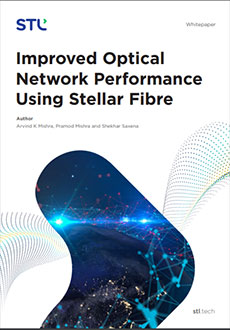The Fibre Optics network infrastructure is highly immune to electromagnetic waves and provides unlimited bandwidth to transport data and voice signals at a very high rate, over extremely long distances. [ref. 1]. This makes it a suitable communication channel to support a large number of network architectures: FTTH, FTTx, Data centre interconnect, Access/Metro/Long distance networks, smart cities infrastructure and wireless backhauling for 4G and 5G networks.
But like any other network infrastructure, fibre networks too are susceptible to disruption due to external factors such as fibre cuts and surge in span loss caused by accidental fibre/cable bends or operational abuse. The increase in span loss reduces signal strength at receiver and increases probability of receiving bit errors. This increases packet loss and leads to call drops or temporary or permanent link failure till abuse is arrested.
Until abuse is rectified, this impacts quality of service (QoS) and quality of customer experience (QoCE). Therefore, the network operators need a superior optical fibre technology that allows them to build networks which are resilient to disruptions and help them to deliver a superior experience to customers as well as to control operational expenses and improve their bottom line [ref. 1]. As we move towards the backbone of the optical network link, it has been observed that there are several operational issues that arise due to abuse during installation or during repair & maintenance, specifically at the cable joint-closure by accidently bending fibre beyond its designed specifications. As a result, there is a significant increase in the macro-bend loss and overall link or span loss. The increase in span loss either reduces the optical signal to noise ratio (OSNR) or reduces the optical signal power received at the destination receiver which results in increased Bit-error ratio (BER), one of the key signal quality performance indicators.
Higher BER leads to increased packet loss, which causes a consequent increase in packet re-transmission leading to higher latency and a decline in network throughput. The entire fibre link might go down if the BER increases beyond the critical level of soft-decision (SD) and hard-decision (HD) forward error correction (FEC) limit. The net result of such a disruption is degradation in network quality and call drops.



